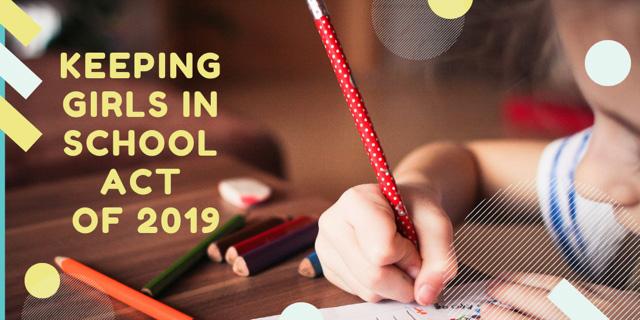
April 9, 2019
Globally, over 130 million girls between 6 and 17 years old are not in school. For adolescent girls especially, many factors feed into their ability to stay in school – do they have enough money to pay tuition fees? Do their parents value their education? Are there safe bathrooms, essential for when girls are on their periods? Will teachers sexually harass them?
For too many, the onset of puberty signals the beginning of a very vulnerable period in their lives.
For decades, the United States has been a leading donor to education globally, investing significant resources on girls’ education and health and on ending violations that harm girls’ chances to realize their right to secondary education.
By introducing the Keeping Girls in School Act, a bipartisan group of members of Congress have signaled that supporting girls’ education worldwide is still important for the US. The proposed bill gives authority to the US Agency for International Development to introduce results-based funding and provide assistance, among other strategies, to tackle the main barriers affecting girls.
.
Our research – based on interviews with thousands of girls – shows that three areas highlighted by the bill should be prioritized as strategic areas to ensure there is greater progress globally:
First, guaranteeing access to a safe, quality education should be a minimum standard for all schools worldwide. Girls, and their parents, need to feel that girls can learn free from corporal punishment or sexual exploitation or abuse by teachers or other students. The journey to school, and access to toilets, must be safe. Students should be taught key subjects, including comprehensive sexuality education, by qualified teachers.
Second, removing secondary school tuition fees is crucial for increasing enrollment, retention, and tackling sexual exploitation related to school costs. But consideration should also be given to removing indirect costs, such as transportation and uniforms, and subsidizing the most economically vulnerable students.
Finally, including all students in education strategies should be non-negotiable. Governments should be supported to focus on truly tackling the many obstacles and discrimination faced by those girls most likely to be excluded. Teachers should be trained to fully engage and teach girls with disabilities, adolescent mothers who are students, and refugee girls. This means providing accommodations and additional support to guarantee equity in learning. Governments should be able to demonstrate that compulsory education laws apply equally to these groups.
The United States’ Congress should not delay in passing this bill.
